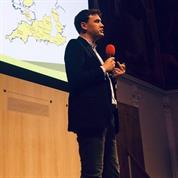Joe Caluori FRSA calls upon Fellows with experience in criminology, child protection, education, law enforcement and drugs policy to use their expertise to help progress his Catalyst project.
“I've had my eye upon him, my dears, close—close. Once let him feel that he is one of us; once fill his mind with the idea that he has been a thief; and he's ours! Ours for his life.”- Charles Dickens, Oliver Twist, Chapter 19
As you sit at your laptop or device reading this post, somewhere far away, in a seaside town or a market town, a child is sitting on a filthy sofa in a ‘Traphouse’; most likely the home of an addict who has traded the use of his home for cheap drugs with an urban gang or organised crime group. The child will sit taking orders on a burner mobile phone which never stops ringing. The child won’t come easily by food, or sleep. They are constantly at risk of arrest, but also physical attack from drug users, rival gang members or their own ‘colleagues’. They will be there for a week or two, beyond the reach of their family or local services, earning a paltry sum of money, or possibly working for free to pay off a debt.
In a few short years, these County Lines drugs networks have moved from being a fringe concern amongst a select community of practitioners in local government, charities and law enforcement to being namechecked as part of a storyline in the Archers, the subject of lurid coverage in the Daily Mail.
The evolution of County Lines networks is a story of how a combination of evolving police tactics, the growth of mobile phone technology and cuts to police, schools and local government created the motivation and opportunity for gangs and OCGs to engage in the criminal exploitation of children, trafficking them and engaging in modern day slavery, to maximise profits and minimise personal risk.
Despite the depravity and violence of these networks, County Lines continue to proliferate. Last year there were 720 known lines reported by the National Crime Agency (NCA), and just months later the NCA conceded this to be on the rise from 1,500 towards 2,000.
Why is it that despite the growing awareness of the violence and exploitation integral to County Lines, criminals have a growing pipeline of child recruits to take on all the risk in their enterprise? Why are the paid recruiters so easily able to use the projection of a glamorous lifestyle to wrench children into the dark world of criminality, detached from school, family, community.
Despite the current notoriety of County Lines, this area is a data desert, other than the NCA reports and some research published by my own Borough, Islington. Consequently, policy making suffers from a critical lack of insight into the factors that enable this exploitation. This is a multifaceted wicked issue, one that crosses borders both geographic and professional.
County Lines: What is our mission?
My Catalyst project seeks to make a difference by taking a new approach. I represent Islington as a local Councillor, and this area is an exporter County lines. Medway Council in Kent, is a reluctant importer – plagued by urban gangs capitalising on demand for class A drugs and proximity to London.
We’ve been tracking these networks and the vulnerable children they exploit in Islington since 2016, so that we are better able to disrupt the gangs and safeguard the children, many of whom do not see themselves as victims. Medway have also done some impressive local mapping of the gangs, drugs and youth violence picture.
By working together, we hope to share our experiences of analysing, understanding and attempting to disrupt County Lines, providing an ‘end to end’ perspective for the first time. We hope this collaboration will provide insights into how this model of exploitation is able to proliferate, and what the key enablers are. From these insights we hope to publish a tool kit for other local authorities, but also to develop some concrete policy proposals for National Government to augment the Home Office’s current ‘County Lines Action Plan 2’.
Already we have had some fascinating insights into the impact of placement decision taken by London Boroughs, who are accommodating young people and sometimes whole families.
Another early focus has been the use of higher education halls of residence as bases, and the increased recruitment of local children.
It’s also clear that the twilight world inhabited by children outside mainstream education across Islington and Kent, has provided the gangs with fertile territory for recruitment.
Want to get involved?
I’d love to hear from Fellows who have expertise and experience in criminology, child protection, education, law enforcement and drugs policy to enrich this project. By placing this work in a specific form of criminal exploitation of children in the wider policy context, we will be better able to make an impact on policy-makers at national level.
Contact Joe Caluori FRSA via email, on MyRSA or Twitter.
The next meeting with Medway Council is on Friday 14th December. If interested in attending this too, please let Joe know.

Be the first to write a comment
Comments
Please login to post a comment or reply
Don't have an account? Click here to register.